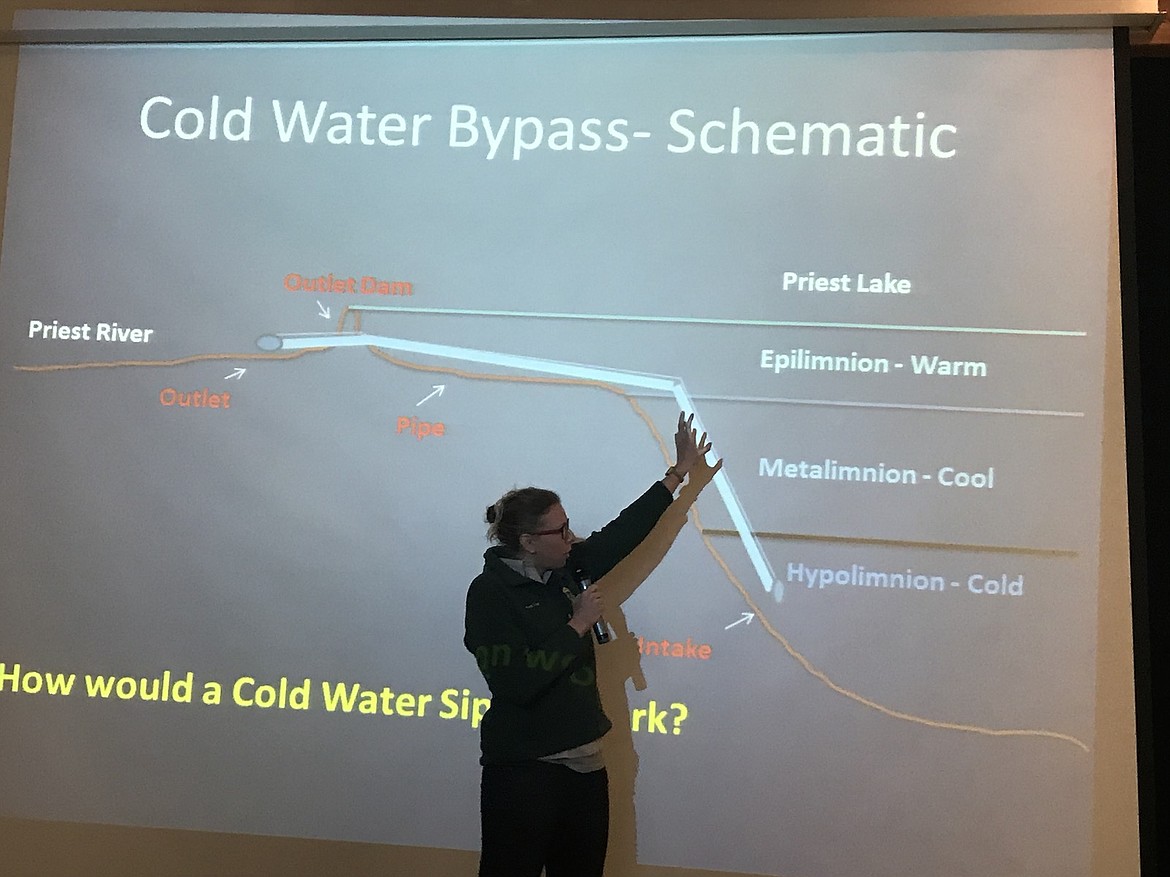Cold water bypass on IDFG radar
▶️ Listen to this article now.
PRIEST RIVER — A project aiming to lower the water temperature of Priest River by at least 4 degrees is set to be discussed this Wednesday.
The Idaho Department of Fish and Game, along with a private contractor, will release results of a study looking at the feasibility of the proposed bypass and the effects it will have on Priest Lake, Priest River and area fish populations. The meeting is being held virtually via Zoom at 6 p.m. on Wednesday.
The cold-water bypass has been up for consideration for years. Kiira Siitari, an IDFG environmental biologist, brought the project before the Idaho Lakes Commission in 2018. The goal of the project is to make Priest River more habitable for bull trout and other fish species. Currently, Priest River reaches a temperature of about 70 degrees in the summer, too warm to support a trout fishery. Stocking efforts in the past were unsuccessful because bull trout and westslope cutthroat need water temperatures below 65 degrees to thrive.
The concept of the project is to create a tailwater type fishery — the first for the northwest corner of the state. A tailwater type fishery is typically found below a dam. Conditions in tailwater fisheries are more consistent than other types of fisheries, making them desirable for anglers in the colder months since they don’t often freeze over.
“We wanted to make sure the engineers could build something that would have an effect well downstream,” Siitari said in 2018.
The cold-water bypass functions by diverting water from the lower, cooler depths of Priest Lake to the egress of the lake where it flows into Priest River. Cooler river temperatures are expected to create a more habitable environment where fish can thrive. A more robust fish population is expected to draw more anglers to the area, raising tourism revenue.
In addition to aiding bull trout, conditions for other trout species will also improve, which could be used to market the river as a high-quality angling destination on par with the Coeur d’Alene and St. Joe rivers. The Coeur d’Alene River generates $3.1 million in annual tourism revenue, while the St. Joe generates $4.1 million, according to Fish & Game estimates.
IDFG is looking into potential environmental impacts the bypass could have on Priest Lake. The bypass concept is not expected to diminish the level of Priest Lake or greatly affect the section of water it will be diverted from, called the hypolimnion. As little as 4 percent of that layer of water could be directed into the river.
“Even small changes here are going to make a difference,” Siitari told Idaho Fish & Game commissioners at the time, “it’s a pretty small slice, but it’s not something we want to overlook.”
$70,000 was obtained in 2018 to explore alternative assessments for the project through the Clark Fork Settlement Agreement. The concept caught the attention of Fish & Game and the commission after a similar project on Washington state’s Sullivan Lake showed success in cooling downstream temperatures. Modeling performed by Portland State University indicated that a conservative amount of water drawn from the hypolimnetic portion of the lake can bring the river temperatures to about 66 degrees, a sweet spot for cold-water trout species.
A question-and-answer session will be held after the meeting. Those unable to attend virtually can watch a recording of the meeting on the Fish and Game website. Registration to attend the meeting can be obtained by calling the Panhandle regional office at 208-769-1414.





